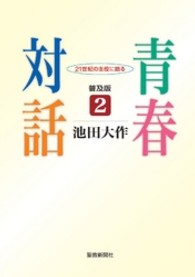- ホーム
- > 洋書
- > 英文書
- > Science / Mathematics
Full Description
Although the current round of international trade negotiations was called a 'Development Round', very little was accomplished before the negotiations stalled in mid-2006. Developing countries as a group stand to gain very substantially from trade reform in agricultural commodities. It is less clear how the 50 countries identified by the United Nations as the 'Least Developed Countries' (LDCs), which have been subject to special consideration in international trade negotiations, would fare. Would they lose their preferential trade access to the OECD markets and, if so, would these losses exceed the potential gains from liberalized trade? Or would low-income countries that currently receive high prices for commodities such as sugar in some OECD-country markets be out-competed by countries such as Brazil in a liberalized market? More generally, would any benefits from liberalized agricultural trade be captured by middle-income countries with good domestic infrastructure and well-functioning markets, leaving few or no economic benefits to the LDCs? How should the LDCs prepare for multilateral reform of agricultural trade, and should they take policy action now in response to the continuation of the trade-distorting agricultural policies pursued by the OECD countries? To what extent do the LDCs and the middle-income developing countries have common interests with respect to the desired outcomes of the trade round? Are the LDCs well represented by the Group of 21, which consists primarily of middle-income countries with strong export potential in agriculture, or should they pursue a different set of goals in future negotiations? In this book, several experts on international trade and development address these and related questions.
Contents
Agricultural Trade Liberalization and the Least Developed Countries.- Agricultural Trade, Development Problems and Poverty in the Least Developed Countries.- Making Agricultural Trade Reform Work for the Poor.- Price Intervention in Sub-Saharan African Agriculture.- Poverty, Land Conservation and Intergenerational Equity.- Trade Liberalization in Cotton and Sugar.- How to Increase the Benefits of the Doha Development Round for the Least Developed Countries.- Improving Market Access in Agriculture for the African Least Developed Countries.- Agricultural Trade Liberalization Under Doha.- The Practical Experience with Agricultural Trade Liberalization in Asia.- What can be Learned from the History of Developed Countries?.- How U.S. Farm Policies in the Mid-1990s Affected International Crop Prices.- The WTO Agricultural Negotiations and the Least Developed Countries.
-

- 電子書籍
- ガールズゾンビパーティー WEBコミッ…
-

- 電子書籍
- 私の推しが今日も最高に尊いので、全力で…
-

- 電子書籍
- 吉右衛門 - 「現代」を生きた歌舞伎役者
-

- 電子書籍
- 青春対話 〈2〉 - 21世紀の主役に…




